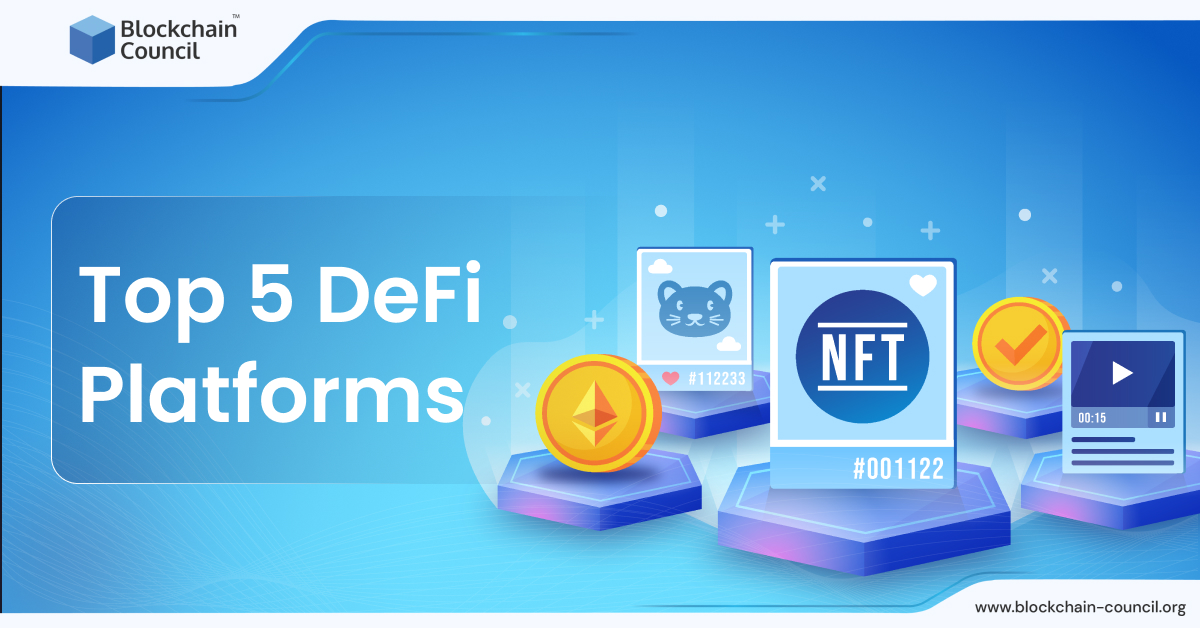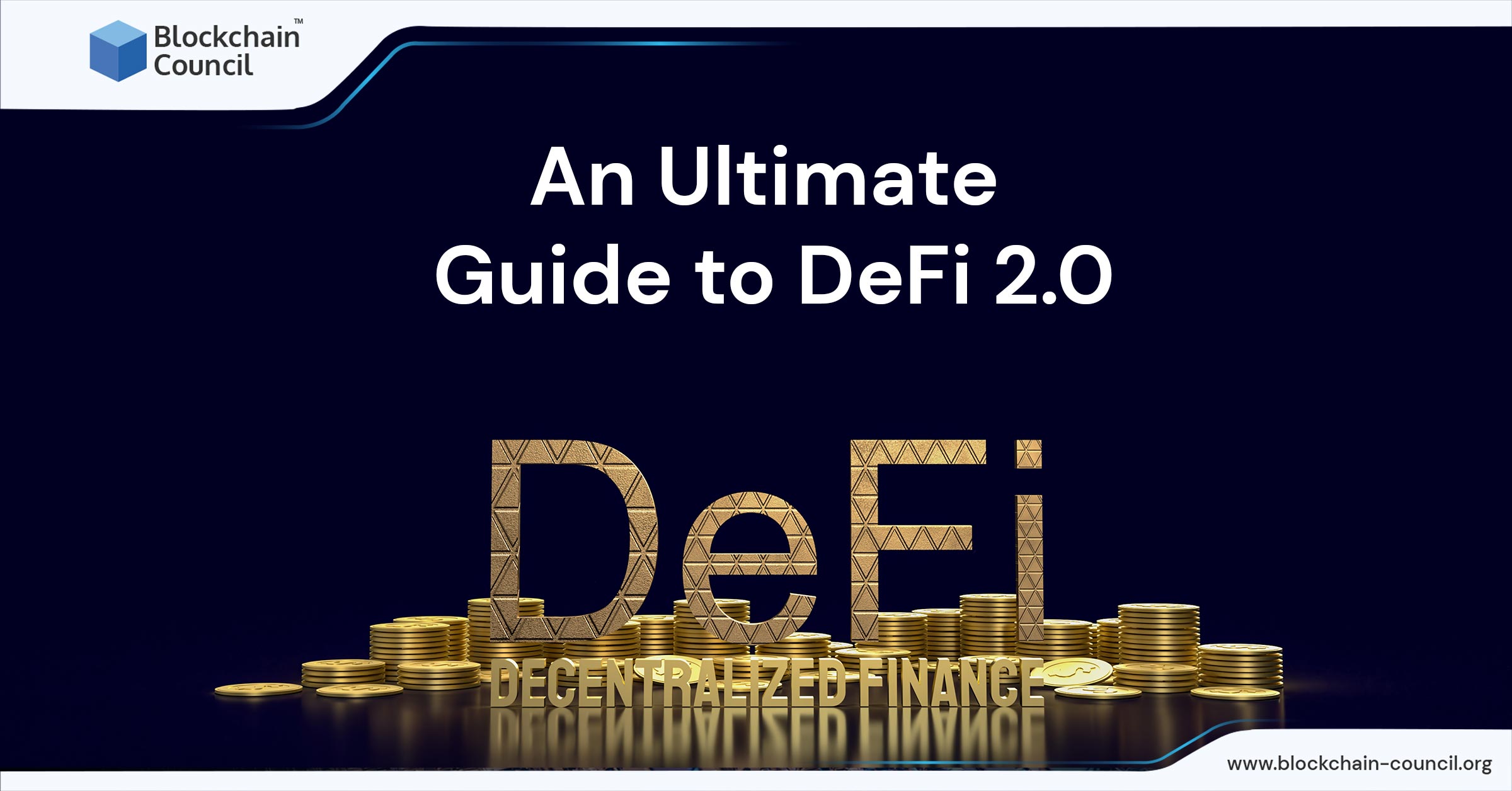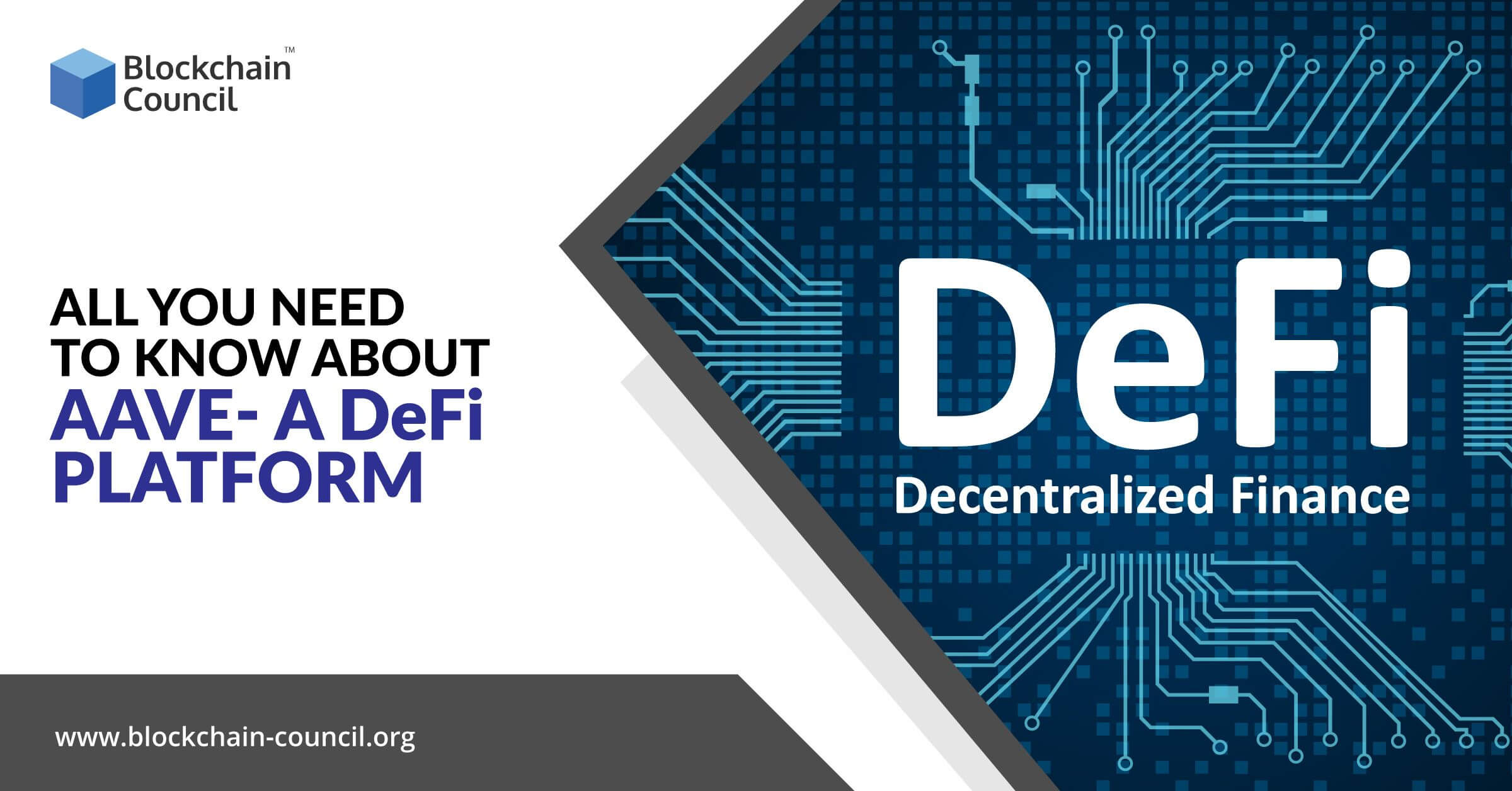
- Blockchain Council
- November 07, 2022
We hope you’ve noticed the differences between conventional (fiat) and cryptocurrencies by now. Although it was only introduced slightly over ten years ago, cryptocurrencies have diversified into many different classes. CeFi (Centralized finance) and DeFi (decentralized finance) are two major subways for blockchain-based financing.
In theory, centralized and decentralized finance aims to enable the use of cryptocurrencies in various financial services. The two do it differently, which is what sets them apart. In centralized finance, individuals or businesses are in charge of the asset class and the procedures. Contrarily, in the case of decentralized finance, it is controlled by a group of clever decentralized protocols. In this blog, we’ll explain the pros of centralized and decentralized finance and help you understand their key differences.
Get DeFi certified. Enroll in Blockchain Council’s DeFi certification today!
Centralized Finance (CeFi)
In transacting cryptocurrencies, “centralized finance” allows users to borrow money and earn interest on their digital assets, such as Ethereum, Bitcoin, USD Coins like USDT & USDC, and others, by using a centralized platform. The platform can be maintained by a single individual or a team or controlled by any financial technology (fintech) organization. Users must accept that centralized authorities handle the services and assets provided in centralized finance. Hence, such requires faith and trust in the platform’s group or organization.
Funds are handled by explicit operating of the central exchange. This denotes the absence of private keys to access your wallet. Furthermore, the exchange specifies which coins are available for trading or the fees associated with using their exchange. Quickly summing up Ce-Fi, when someone sells or purchases cryptocurrencies via. a centralized exchange, they don’t get the ownership. Additionally, you are bound by the regulations that a Centralized Exchange places on you. Additionally, you must abide by the guidelines established by the central exchange.
Pros of Centralized Finance (CeFi)
Despite the attention DeFi receives for its cutting-edge methodology, centralized finance offers several significant advantages.
- On a generic stance, CeFi often takes a more all-encompassing strategy and emphasizes maximizing the value of cryptocurrencies.
- CeFi platforms are more adaptable and practical than DeFi; cross-chain exchange and money conversion to cryptocurrencies are possible.
- Depositing assets on CeFi platforms will also result in higher interest rates.
- In the event of problems or difficulties with the services, consumers also have access to customer care offered by people or businesses managing the funds.
Decentralized Finance (DeFi)
Using a combination of smart contracts and algorithms, decentralized finance is an innovative form of financial service. There is no need for intermediaries or banks as DAOs can function independently. Using blockchain technology, they function on decentralized networks like Ethereum, Solana, Cardano, and likewise. Users can deposit funds to be handled by smart contracts on DeFi platforms (e.g., Compound Finance, Kraken, Nexo, etc.) because they are non-custodial. The money is inaccessible to any organization or person.
A transparent, open-source, and equal for all kinds of service environment is what DeFi seeks to create. The decentralized financial system provides services, including lending money, yield farming, digital currency, asset storage, and more. You own the key pair for your wallet while using DeFi instead of CeFi. Therefore you have complete control over your assets. Furthermore, to access DeFi services, users wishing to equip DeFi, decentralized applications (dApps) created on blockchain technology are a must.
Pros of Decentralized Finance (DeFi)
Decentralized Finance has numerous advantages, some of which are given below.
- The trustless and permissionless features of DeFi are the most rebellious advantages
- Since the DeFi services can be confirmed by auditing the codes, you don’t need to worry about the platform functioning as intended.
- You can also use outside tools to determine whether a transaction was carried out correctly
- You would always need to complete a Know-Your-Customer (KYC) verification on CeFi platforms to access the services. You can begin utilizing the services anonymously in DeFi without performing a KYC or other identity verification
One drawback of DeFi is that it can be abused by the wrong parties to conduct shady transactions and frauds, even in financing terrorism-related activities. DeFi is intended to be 100% data transparent. It is acceptable to say that there are a few key differences between decentralized and centralized finance.
It ultimately boils down to relying on an open, permissionless smart system or placing your trust in individuals to responsibly manage your cryptocurrency cash. In any case, the advent of these services is a sign of the future promise of cryptocurrencies and how they will continue to challenge how we understand and utilize money in the modern world.
DeFi vs. CeFi
| Features | CeFi | DeFi |
| Fund Custody | Centralized platform holds full custody, not users | Users have full custody and authority of their funds |
| Security | Vulnerability persists due to security bridges on the CEX’s | Less vulnerable due to automated protocol-based functioning |
| Services | Fund exchange (Margin and derivative-based), Lending, Borrowing, Payment services | Fund exchange (Margin and derivative based), Lending, Borrowing, Payment services |
| Personal Information Sharing | KYC Process is essential | May on may not require KYC |
| Risk Factor | CEX bears the responsibility for security, prone to cyber attacks and CEX thievery | Security depends on the blockchain itself, code related flaws can put funds at risk |
| Cross-chain exchanging | Convenient cross-chain exchange since long | Cross-chain exchanging introduced later after the introduction of pegged tokens |
Despite some subtle differences, the final debate always comes as to whether people should place their faith in technology or humans. Users of DeFi rely on the technology to operate as intended to take advantage of the services being provided. Users of CeFi, on the other hand, have faith that a company’s employees will handle money management and service delivery. Both forms of finance facilitate a wide array of financial services. Let’s talk about a few of the characteristics and traits of the two ecosystems that set them apart.
Features of CeFi
-
Centralized Exchange (CEX)
Users deposit money to the exchange to manage it in an internal account using a conventional cryptocurrency exchange, like Kraken, Coinbase, or Binance. Even if money is maintained on the exchange, they are not in the users’ possession and, therefore, is open to threats should the exchange’s security procedures fail.
Centralized exchanges have thus been the subject of numerous security attempts. Customers on the centralized exchange are comfortable disclosing personal information and entrusting these businesses with their money because they believe central exchanges to be reliable.
Additionally, big exchanges have entire departments with customer care personnel that help customers. Excellent customer service gives consumers peace of mind and reinforces their perception that their money is safe.
-
Cross-chain services
Trading of other coins released on independent blockchain platforms, like XRP, BTC, and LTC, is supported via CeFi services. DeFi services do not support these tokens because cross-chain swaps are complex and time-consuming. CeFi can gain custody of funds from various chains to get around this problem. Since many of the most popular and highly valued coins are decentralized and don’t use interoperability standards, this is a massive advantage for CeFi.
-
Flexibility of Fiat Conversion
When converting from fiat to bitcoin and the other way around, centralized services offer more flexibility than decentralized services. Although DeFi providers do not provide fiat that flexibly, most bitcoin-to-fiat conversions require a centralized institution. Customers can have a better customer experience by easy onboarding them into the Centralized Finance (CeFi) ecosystem.
Features of DeFi
-
Permissionless
Users can use DeFi without asking for permission. CeFi users must go through a KYC process to access services, requiring them to deposit or provide personal information.
Users don’t need to deposit money with DeFi or provide personal information to use the services directly using a wallet. DeFi is fully accessible to all parties without any restrictions or discrimination.
Additionally, anybody who wants to build on a decentralized platform can do it without restrictions. High levels of accessibility are offered, and community collaboration is encouraged. The DeFi ecosystem’s produced goods are made to complement one another. DeFi products are often referred to as “money legos.”
-
Trustless
You don’t have to put your faith in the service to do what is promised, which is the main advantage of using DeFi services. By reviewing their code and using third-party tools like Etherscan to determine whether a transaction was adequately executed, users may confirm that DeFi services operate as intended.
-
Rapid Innovation
DeFi’s rapid rate of innovation is another critical benefit. The Decentralized Finance Ecosystem is continually enhancing its existing capabilities and experimenting with brand-new ones. The DeFi industry, once build-centric, has evolved into a thriving ecosystem with cutting-edge financial services. DeFi space has been attempting to provide alternatives to the problem-solving methods that have been successful in functionalities where centralized financial services have flourished.
By acting as tokens pegged to the value of BTC, for instance, solutions like tBTC and wBTC that are compatible with decentralized protocols bridge the gap created by DeFi’s inability to support incompatible cryptocurrency transfers like BTC. Users of DeFi can access Bitcoin through DeFi without having to utilize the token directly, thanks to this feature.
What to choose: CeFi or DeFi?
CeFi guarantees fair commerce and the protection of your funds. Additionally, with the support of a responsive customer care team, investors using fiat currency can participate in cryptocurrency trading. In contrast, DeFi wants to eliminate intermediaries and intrusions from the blockchain realm.
Each of the types has its own set of advantages and drawbacks. DeFi is the better option if transparency and privacy are crucial to you. At the same time, CeFi offers more flexibility and allows you to share risks with other blockchain network users.
Enjoyed what you read? We also provide expert-curated certification courses relative to everything within the Blockchain space. Choose amongst 50+ of our Blockchain Certification and enroll today!





































































 Guides
Guides News
News Blockchain
Blockchain Cryptocurrency
& Digital Assets
Cryptocurrency
& Digital Assets Web3
Web3 Metaverse & NFTs
Metaverse & NFTs
